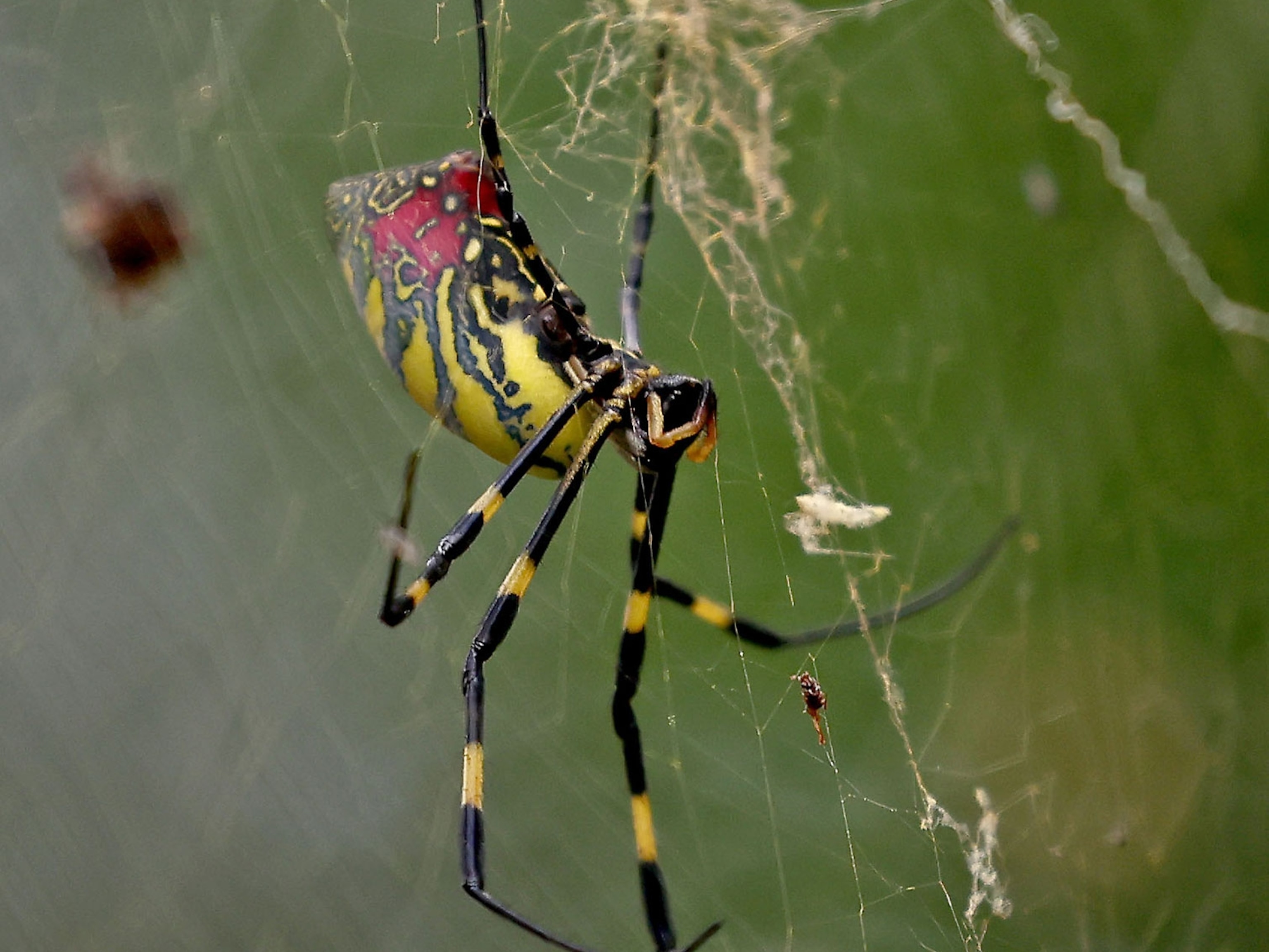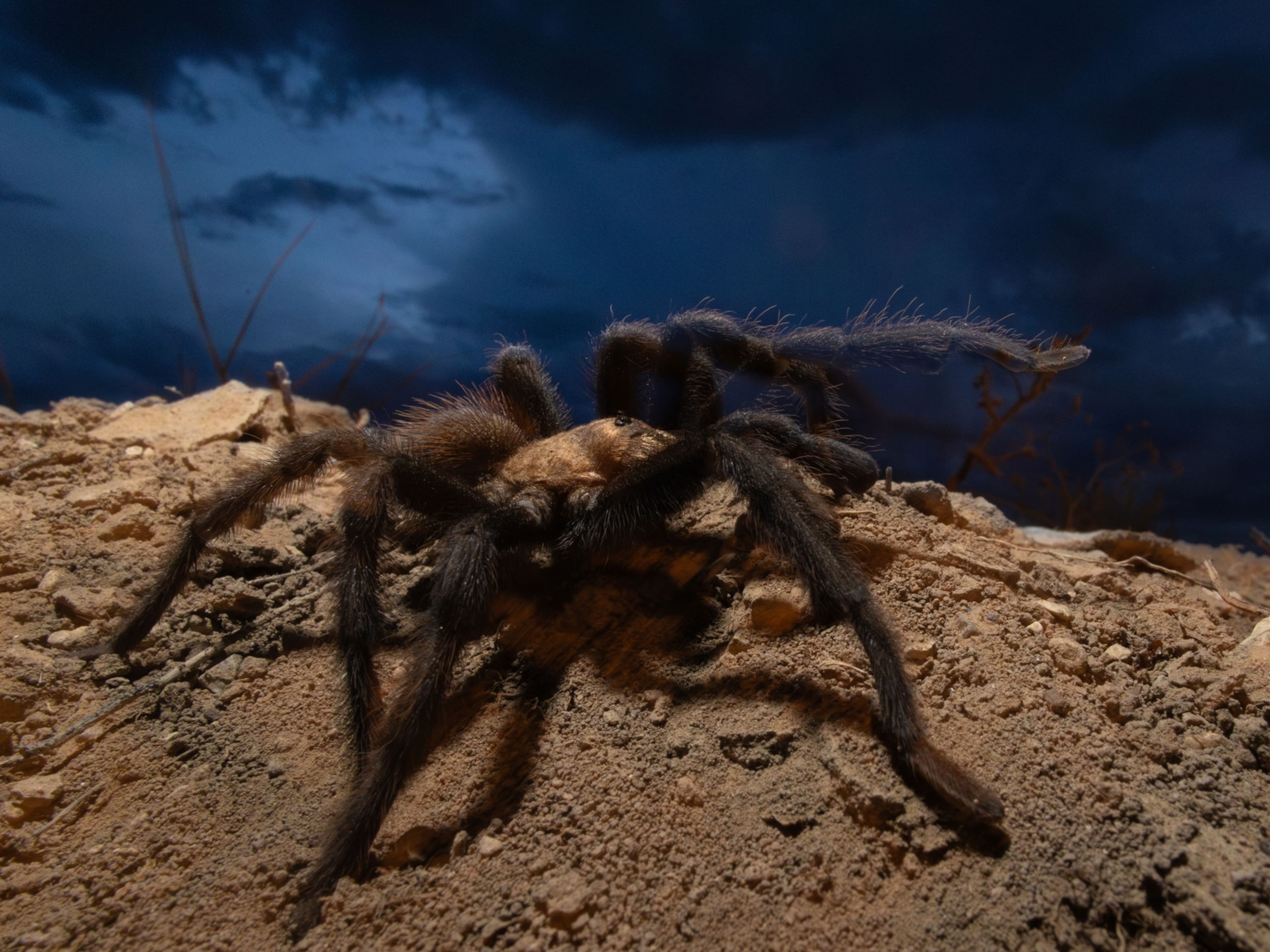How Scientists Taught a Spider to Jump on Demand
The spider, named Kim, is helping researchers understand the biomechanics needed to make jumping micro-robots.
If you’re afraid of spiders, a new study published in the journal Nature Scientific Reports might not come as welcome news.
Researchers at the University of Manchester have trained a regal jumping spider named “Kim” to leap on demand. It’s the first time a spider has been successfully trained to jump.
Unlike domesticated pets like dogs, spiders typically don't eat more than once a week. This made training them to jump a difficult task because they couldn’t be as easily incentivized by food.
“She would eat a cricket per week, so we couldn’t use a rewards system [to train her],” study author Mostafa R.A. Nabawy says. “And if we just gave her prey, then she would only jump motivated by the food. Then we would have to wait a week between jumps.”
Instead, Nabawy and his team manually moved Kim from one platform to the other. They repeated this process until Kim was conditioned to make the jump without their assistance.
(See how spiders take flight by "ballooning.")
Kim’s training allowed the researchers to operate in a controlled environment with high-speed cameras and 3D CT scans that captured the precise movements of the spider’s jumps.
They found that the force on Kim’s legs at take-off was five times her weight. This allows her to jump more than six times the length of her own body from a standing position. For perspective, a human can only jump one and a half times the length of their body from a stationary position.
Nabawy and his team were also amazed by Kim’s accuracy.
“She never missed,” he says. “She didn’t jump unless she was confident she could make the jump.”
Nabawy is convinced that she has the power to jump even farther, but he suspects that her vision doesn’t allow her to see the platform clearly past six body lengths.
By gaining a better understanding of the biomechanics behind Kim’s jumps, researchers can apply their findings to engineering micro-robots.
“We are familiar with robots that are aimed at taking over human functions, but there are millions of insects in the world that perform specific functions that we have interest in adapting to robotics,” says Nabawy.





